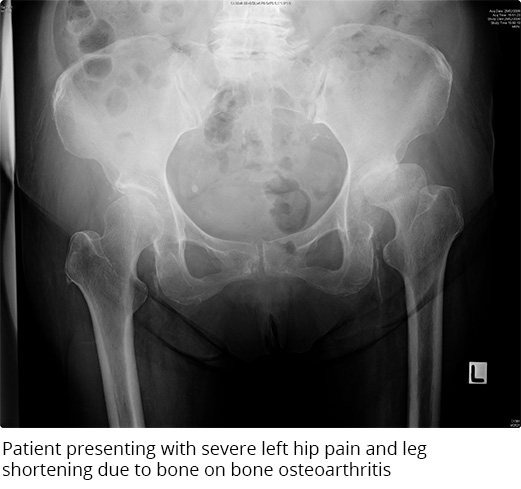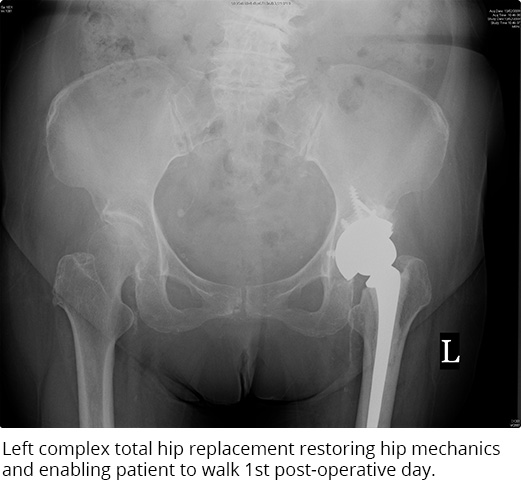 Hip osteoarthritis affecting varying age group of patients. The ages of patient can range as young as 30years of age and can extend beyond the 7 or 8th decade. In osteoarthritis the condition is often due to cartilage degeneration involving the socket (acetabulum) and the femoral head (the ball and socket of the hip joint). In patients with avascular necrosis it can result in damage to the circulation which consist of small blood vessels to the hip joint. As a result of this there is decrease in nourishment to the femoral head. Progressively there is a collapse in the hip joint and this result in severe pain, loss of mobility, and functional limitation. In patients can progress on to advance osteoarthritis even at very young age. Dr Sathappan has performed hip replacement in patient as young as 28years of age using alternative bearing to facilitate in improved recovery and long term outcomes.
Hip osteoarthritis affecting varying age group of patients. The ages of patient can range as young as 30years of age and can extend beyond the 7 or 8th decade. In osteoarthritis the condition is often due to cartilage degeneration involving the socket (acetabulum) and the femoral head (the ball and socket of the hip joint). In patients with avascular necrosis it can result in damage to the circulation which consist of small blood vessels to the hip joint. As a result of this there is decrease in nourishment to the femoral head. Progressively there is a collapse in the hip joint and this result in severe pain, loss of mobility, and functional limitation. In patients can progress on to advance osteoarthritis even at very young age. Dr Sathappan has performed hip replacement in patient as young as 28years of age using alternative bearing to facilitate in improved recovery and long term outcomes.


 In patients presenting with early stages of hip arthritis due to such conditions of AVN they can be treated with analgesia and physical therapy including reduction in weight loading on affected hip. Medication will have a short term benefit improving the condition of the patient. However, with advance disease the need for hip replacement will often be required.
In patients presenting with early stages of hip arthritis due to such conditions of AVN they can be treated with analgesia and physical therapy including reduction in weight loading on affected hip. Medication will have a short term benefit improving the condition of the patient. However, with advance disease the need for hip replacement will often be required.
In the intermediate stages when the patient present earlier to clinician there is a possibility for core decompression surgery. This involves drilling holes which are calculated to the areas of damage of the femoral hip. By doing this decompression new blood supply is permitted to be restored in the femoral hip. However, to prevent further collapse a structural scaffold is essential. This is done by placing the fibular (small bone from the leg) with its native blood supply. By restoring a structural scaffold that is a living tissue further collapse can be well prevented. In such patients with rehabilitation physiotherapy they can be restored to a improved outcome. Dr Sathappan with his colleagues has published papers which are available for further reading using the techniques that can be applied in hip salvage surgery.
In advance cases however, hip replacement is essential. In younger patients to optimise longevity using ceramic bearings and when necessary by utilising computer and robotic systems accurate placements of the hip replacement can be achieved with minimum incision size. This allows the patient to rehabilitate and achieve discharge for home within 3days following surgery. Following discharge the patient is rehabilitated with the guidance of the clinic physiotherapist back to all normal work and daily activities by 1 month and return to sporting activities within 2 months from the surgery. With good surgical techniques patient may even be able to achieve cross-legged sitting and squatting when they present to the clinician in the intermediate stage before there is muscle loss or severe hip stiffness.
Patient able to perform squatting following minimally invasive hip replacement surgery